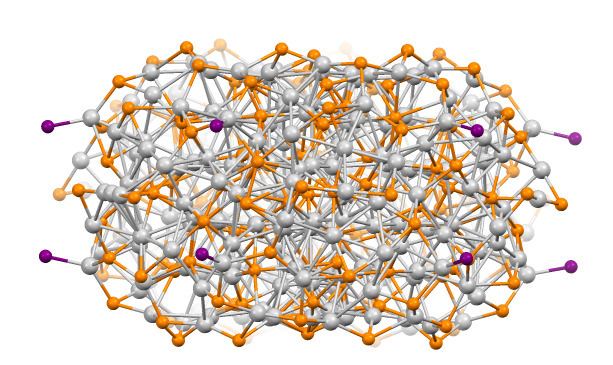 | ||
A nanocrystal is a material particle having at least one dimension smaller than 100 nanometres (a nanoparticle) and composed of atoms in either a single- or poly-crystalline arrangement.
Contents
The size of nanocrystals distinguishes them from larger crystals. For example, silicon nanocrystals can provide efficient light emission while bulk silicon does not and may be used for memory components.
When embedded in solids, nanocrystals may exhibit much more complex melting behaviour than conventional solids and may form the basis of a special class of solids. They can behave as single-domain systems (a volume within the system having the same atomic or molecular arrangement throughout) that can help explain the behaviour of macroscopic samples of a similar material without the complicating presence of grain boundaries and other defects.
Semiconductor nanocrystals having dimensions smaller than 10 nm are also described as quantum dots.
Synthesis
The traditional method involves molecular precursors, which can include typical metal salts and a source of the anion. Most semiconducting nanomaterials feature chalcogenide (SS−, SeS−, TeS−) and pnicnides (P3−, As3−, Sb3−). Sources of these elements are the silylated derivatives such as bis(trimethylsilyl)sulfide (S(SiMe3)2 and tris(trimethylsilylphosphine (P(SiMe3)3).
Some procedures use surfactants to solubilize the growing nanocrystals. In some cases, nanocrystals can exchange their elements with reagents through atomic diffusion.
Applications
Nanocrystals made with zeolite are used to filter crude oil onto diesel fuel at an ExxonMobil oil refinery in Louisiana at a cost less than conventional methods.
